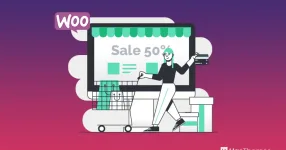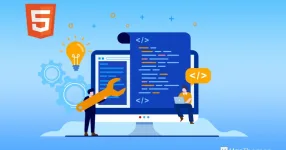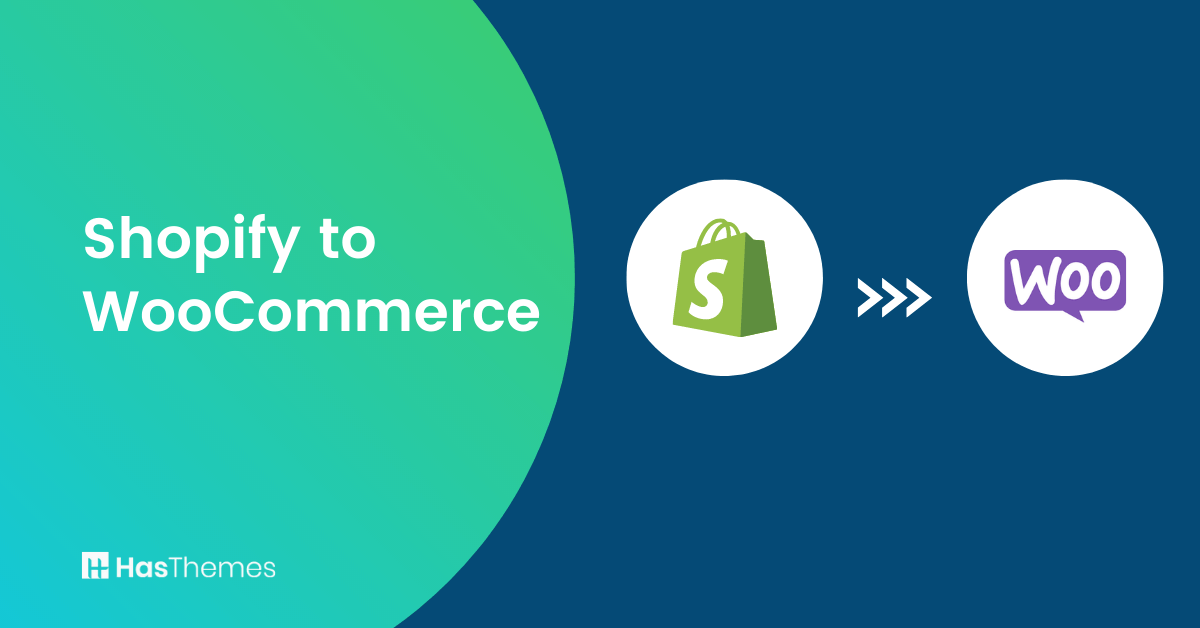
Shopify to WooCommerce: How to Migrate in 6 Simple Steps
This post is for you if you’ve tried running a Shopify business before but found it wasn’t flexible enough to satisfy your needs. And WooCommerce is what you are going for. However, Shopify to WooCommerce migration is complex due to their dissimilar database architecture.
Lucky for you, we are here to help! In today’s article, we will shed some light on migrating from Shopify to WooCommerce with simple steps:
- Step 1: Back up your Shopify data.
- Step 2: Build your WooCommerce website.
- Step 3: Set up Source Cart and Target Cart.
- Step 4: Select entities to migrate.
- Step 5: Run the full migration.
- Step 6: Go through the post-migration checklist.
No more beating around the bush; let’s get cracking!
- Why Should You Go for WooCommerce over Shopify?
- How Much Does It Cost to Migrate from Shopify to WooCommerce?
- Switching from Shopify to WooCommerce – Preparation
- Shopify to WooCommerce – During the Migration
- What to do after the Shopify to WooCommerce Migration?
- Run post-migration services
- Change DNS and switch domain
- Customize your storefront
- Install additional apps
- Shopify to WooCommerce – FAQs
- Key Takeaways
Why Should You Go for WooCommerce over Shopify?
Both WooCommerce and Shopify are the giants when it comes to eCommerce platforms. They are the foundation of multiple successful online businesses across the globe.
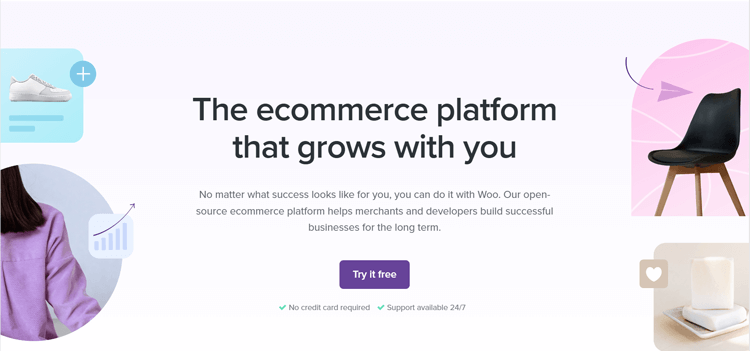
However, when putting the two together, WooCommerce seems to be ahead of the game for the following reasons:
Flexibility and Control
WordPress, an open-source content management system, is the foundation for WooCommerce. This implies that you can customize your online store to whatever you want. You have complete creative control over the look and feel of your online shop, down to the coding.
Nevertheless, WooCommerce still gives the developers more space to make considerable changes and construct bespoke features.
Whereas Shopify is a hosted platform, thus there are restrictions to the backend access, which may hinder specific customizations or integrations. Even though they developed Shopify Liquid, the functionality of some important features, such as the shopping cart, checkout, and account pages, are still unable to be modified.
Compared to Shopify, which requires a monthly subscription fee, WooCommerce gives you more flexibility in price. In other words, you have complete control over what you are paying for, from the hosting to the extensions installed on your website.

Scalability
WooCommerce can expand with your company’s growth. It’s scalable to manage high traffic and extensive product catalogs without increasing per-transaction costs. As long as you are going with the correct hosting infrastructure, the potential for your profits is limitless.
On the other hand, if you wish to scale your business, you may have to upgrade to Shopify Plus. This premium version of Shopify is designed for larger businesses and high-volume stores. The only downside is that its monthly fee starts from $2000/month, which is quite expensive compared to WooCommerce.
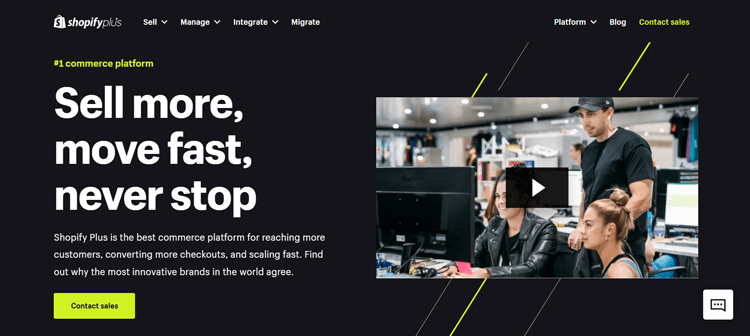
SEO
Using the WordPress editor, you can quickly and easily optimize individual product pages by making changes to the page’s body text, simple URL rewrites, meta descriptions, alt tags, and other aspects.
On the contrary, there are certain SEO-related restrictions with Shopify. In fact, we were unable to change their URLs to our liking. This is because some parts of your store’s URLs cannot be changed owing to Shopify’s inflexible URL structure. In addition, it is not easy to create new sub-categories on this site, too.
🚀Boost Your Online Store Sales with Mavon Shopify Theme!
Mavon – Your ticket to success! 🚀 Boost revenue with conversion-focused features and intuitive design, turning visitors into loyal customers.
How Much Does It Cost to Migrate from Shopify to WooCommerce?
The overall price of switching from Shopify to WooCommerce will vary significantly depending on your migration method. To save money, you can consider performing the task yourself. However, we do not advise choosing this method due to the complex technical expertise and the problems you might encounter during data migration.
Hiring a developer or web agency is another way to help you move Shopify to WooCommerce. Most of the time, they will charge you between $50 and $80 per hour. Depending on how intricate your needs are, you should expect to spend anything from $500 to $2500, and that’s just for the migration itself.
Not to mention the fact that finding a web design company or freelancer with an in-depth understanding of a platform’s data structure might be difficult. If there are errors in data processing and table formation, you’ll have to wait longer and spend more money on repairs.
Based on the mentioned methods, we recommend LitExtension. They have successfully performed over 280,000 cart migration jobs for over 150,000 customers worldwide and still continue proving their position as the #1 Shopping Cart Migration Expert.
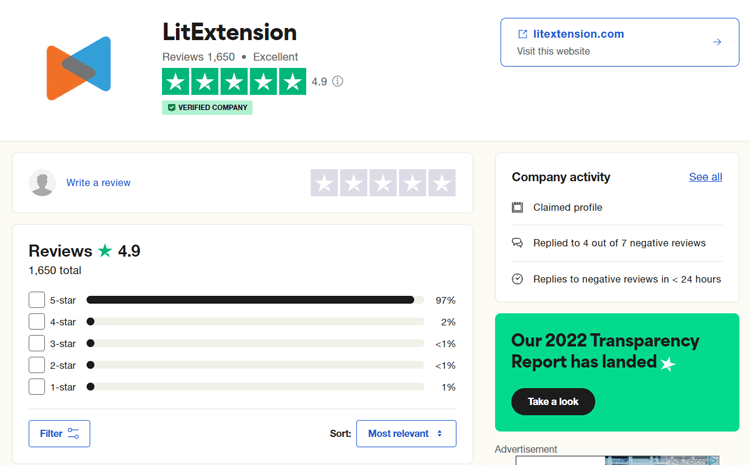
With over 10 years of experience, LitExtension’s technical team is well-versed in all of WooCommerce and Shopify’s functions. As a result, they can minimize the possibility of data errors and ensure that everything stays consistent.
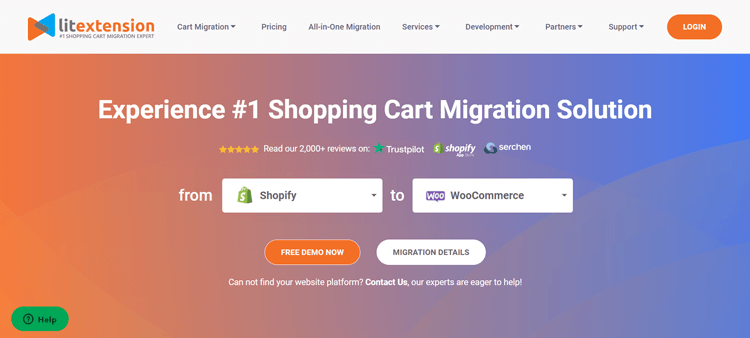
Switching from Shopify to WooCommerce – Preparation
Now that you have had all the necessary information related to Shopify to WooCommerce data migration, it’s time to get into the actual work!
Backup Shopify data
From our experience, saving all data into a single file is essential before making any changes to your store. You can avoid problems like crashes, slow performance, and data loss during the Shopify to WooCommerce migration process.

Shopify CSV template
Your Shopify data can be easily exported to CSV files with simple clicks. However, the platform only allows users to save their customers, orders, gift cards, discount codes, and financial data information. Hence, you must manually copy and paste the information that can’t be exported.
Just a single mistake can significantly affect the entire subset of data. As a result, we recommend checking everything twice before saving a copy of your Shopify shop. To export products from Shopify, follow these steps:
- Navigate to the “Products” page from your Shopify Dashboard.
- Click on “Export”.

Click on Export from the Products page
- Define the type of information and file you want to export.
- Select “Export products”, and you’re good to go!
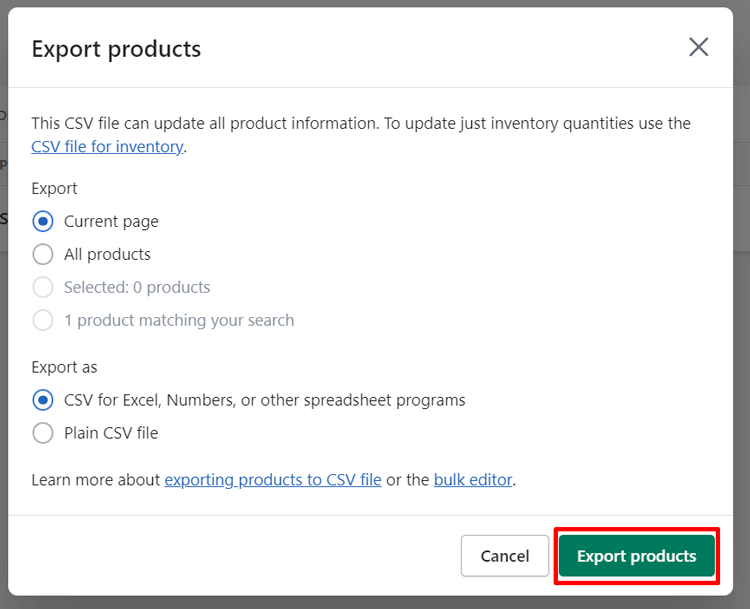
Create a WooCommerce store
Once you have finished backing up the Shopify export data, it’s time to build your WooCommerce website. If you’ve already created one, then you can skip this step.
Keep in mind that WooCommerce is a plugin for the WordPress platform, so you’ll need to install it first. Once your WordPress site is up and running, you can set up WooCommerce.
Go to Plugins > Add New menu on the left-hand sidebar from the WordPress admin panel.

Now, type “WooCommerce” into the search bar, and click on Install Now > Activate Now right next to the icon. Now, you’re ready to kickstart your business with WooCommerce Wizards!
To get your WooCommerce store up and running, we suggest you follow the 5 steps outlined in this guide.
- Store Setup
- Payment
- Shipping
- Recommended
- Activate
Shopify to WooCommerce – During the Migration
Here comes the most exciting part – the actual migration. In this section, we will guide you through a tutorial on Shopify migration to WooCommerce with LitExtension:
Set up Source Cart and Target Cart
Initially, navigate the LitExtension website and sign up for a new account. You will be asked to enter your email address, full name, and password. You can consider signing up via Facebook or Google Plus to save time.
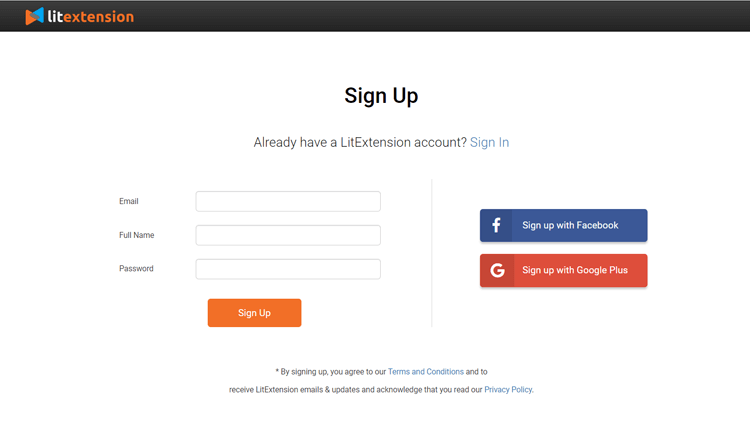
Back to the LitExtension Homepage, go to the “Create Migration” tab to configure your Source Cart and Target Cart.
Since you are moving from Shopify to WooCommerce, choose “Shopify” from the Source Cart Type dropdown. Then, fill in the Source Cart Url and API Password.

Moving on, we have “WooCommerce” as the Target Cart. The system requires you to install the “le_connector” file to your backend root folder until you receive a message saying, “Connection was successfully installed”.
The Connector file is a special access gateway created by LitExtension. Since it is utmostly protected by your unique Security Token, each account is only associated with a single connector file only.
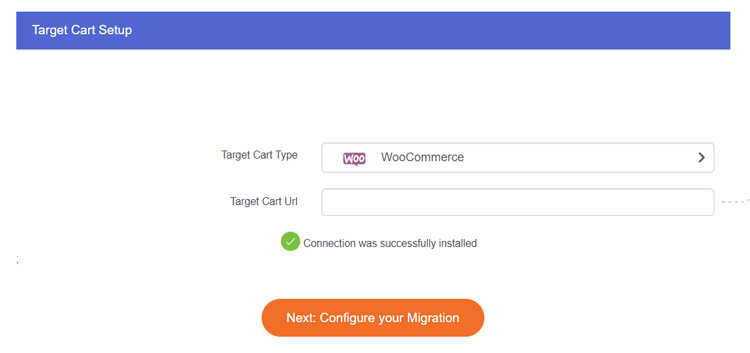
When you see the notification, hit “Next: Configure your Migration” to jump to the next step!
Select the migration entities
LitExtension lets you decide which data will be delivered via the migration. These could be products, customers, pages, blog posts, etc. Pick out the best one for your store or simply click “Select All” in case all the checkboxes match your needs.
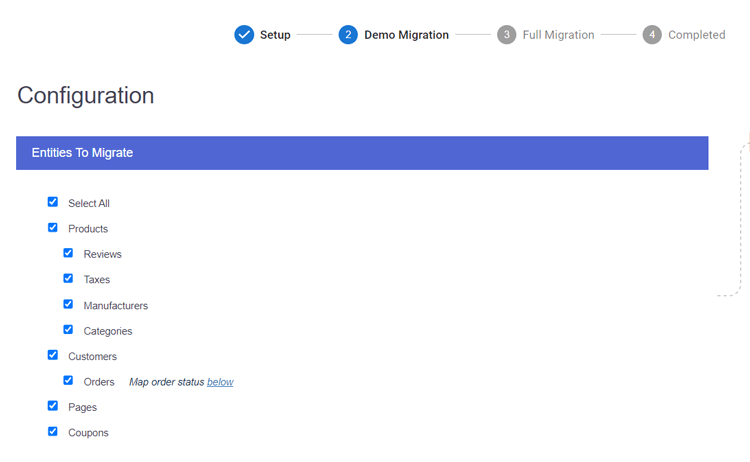
For further settings, you can make use of LitExtension’s Additional Options. Some of the most common choices among business owners who are considering a Shopify to WooCommerce migration include:
- Migrate customers’ passwords: If your Shopify store is configured with the standard settings and no custom code changes have been made, LitExtension will allow you to migrate passwords to WooCommerce. Thus, your customers can maintain their customer’s accounts despite switching platforms.
- Preserve Order IDs on Target Store: If you choose this option, your Shopify product IDs will remain the same on the Target Store even after the migration is completed. Hence, you can guarantee that your managing system won’t be interrupted.
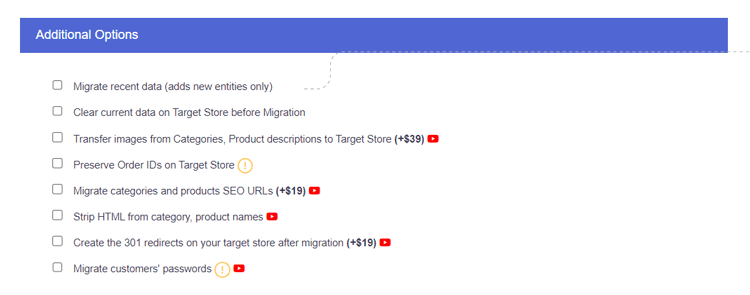
Before moving on, we recommend looking at language and order status mapping between the platforms. The order statuses shown on your Source and Target Cart may not be an exact match. Thus, make any relevant changes if you want:
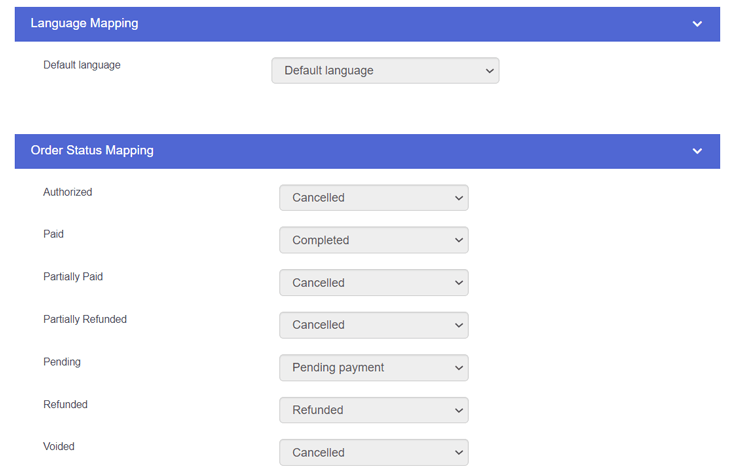
Run the Full Migration
Here, you will be able to activate the Free Demo Migration to see how the actual process works. Otherwise, you can immediately run the full migration by ticking the checkbox “Skip Demo Migration” and clicking on “Next: Start Full Migration”.
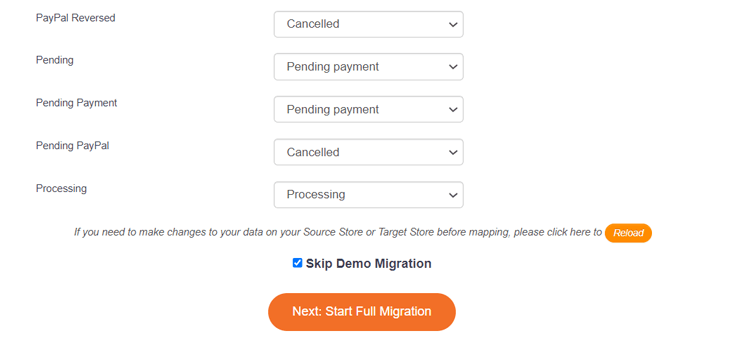
One of the perks when using LitExtension service is that you don’t have to keep the device running during the data migration. Lay back and let the system run itself!
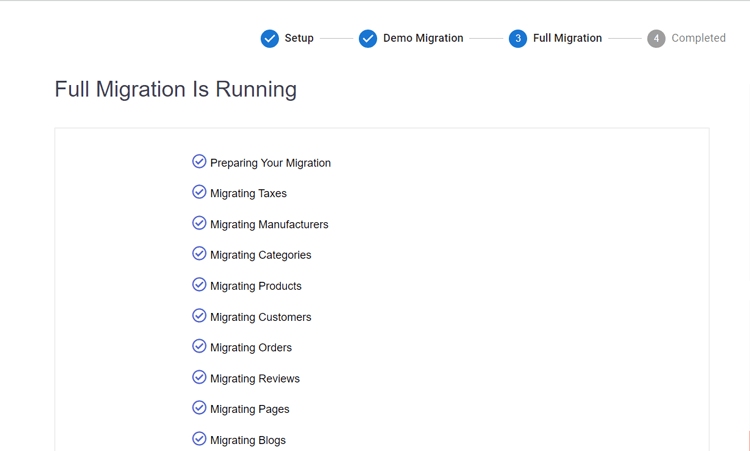
The minute when the whole migration process is finished, you’ll receive a message on the screen saying:
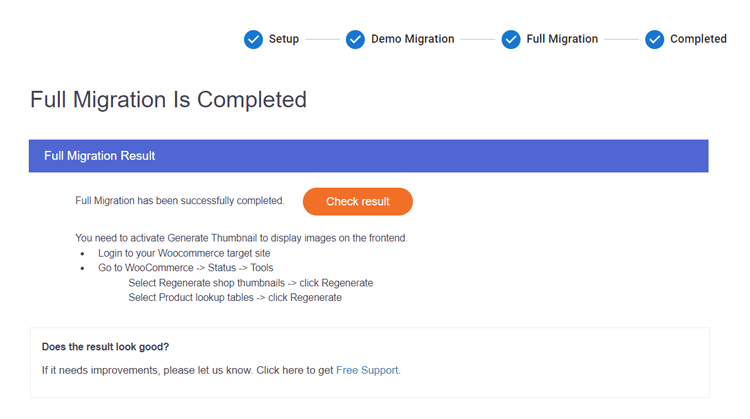
There you go, a successful Shopify to WooCommerce migration. It’s time to kickstart your business!
🚀Boost Your Online Store Sales with Mavon Shopify Theme!
Mavon – Your ticket to success! 🚀 Boost revenue with conversion-focused features and intuitive design, turning visitors into loyal customers.
What to do after the Shopify to WooCommerce Migration?
After the Shopify to WooCommerce transfer is complete, you should invest a significant amount of work into setting up your new store.
Run post-migration services
LitExtension ensures that your Shopify store continues functioning normally during the Shopify to WooCommerce migration process. That is to say, even while you work on the configuration and setup, your Shopify store can still receive new orders and customers like usual.
Currently, they are offering three post-migration services for your reference. All of these are free of charge within the first 3 months after your full migration under the condition that the number of additional entities is less than 10% of the total.
- Recent data migration: This allows you to import all the newly created data.
- Smart update: All of your data modifications in the old store and newly appearing entities will be updated using this service.
- Re-migration: You may transfer your data once again, just in case there are errors or the previous migration hasn’t fulfilled your requirements.
Change DNS and switch domain
Additionally, you’ll have to do a DNS and domain name server change. In order or web browsers to access online content, the Domain Name System (DNS) will need to transform domain names into IP addresses.
The IP address of your network may be discovered using your DNS settings. For this reason, you must update your DNS settings to refer to the new IP address when creating a custom domain or when the Server’s IP address changes.
Customize your storefront
Due to WooCommerce’s structure, you can’t maintain the same storefront design as Shopify. Hence, you may have to spend some time customizing your website from scratch when moving to WooCommerce.
Fortunately, a wide variety of WooCommerce themes go well with all types of businesses. You can purchase one from the WooCommerce theme store or a third party. ThemeForest is a great place to look for WooCommerce website templates and get yourself one.
Install additional apps
Then, you may improve your store’s efficiency even more by installing additional WooCommerce plugins. Over 60,000 plugins are available for WordPress, many of which are optimized for use with WooCommerce. You may also hire a developer to create a customized app.
Shopify to WooCommerce – FAQs
How do I import Shopify orders into WooCommerce?
First, export your Shopify orders into a CSV file for backup purposes. When migrating with LitExtension, you check the tickbox “Orders” as one of the migration entities. By doing so, LitExtension will help move all of your order information to WooCommerce with ease.
Why move from Shopify to WooCommerce?
As an open-source platform, WooCommerce allows you more freedom to tailor your business to your customer’s preferences. Furthermore, WooCommerce also offers additional choices in themes and plugins, making it easier to create a unique and extensible online store. Hence, it is an excellent alternative to Shopify.
Can you transfer from Shopify to WooCommerce?
Of course, you can perform the task independently, hire an experienced developer or ask for help from a migration expert like LitExtension. Compared to other Shopify to WooCommerce migration methods, LitExtension stands out as it saves you time, effort, and money.
Key Takeaways
With various options available for Shopify to WooCommerce migration, finding the most effective one should be your top priority. Since there is lots of work waiting for you after switching to a new platform, try to go for the method that saves you time and money.
We hope you’ve found this article helpful in learning more about the procedures involved in transitioning from Shopify to WooCommerce. Once you follow the steps closely, you’ll be surprised by how simple the process is.

